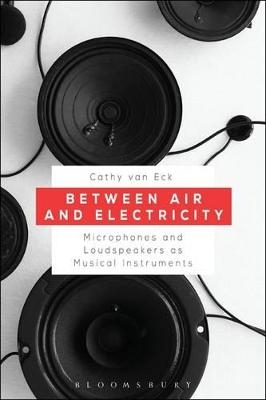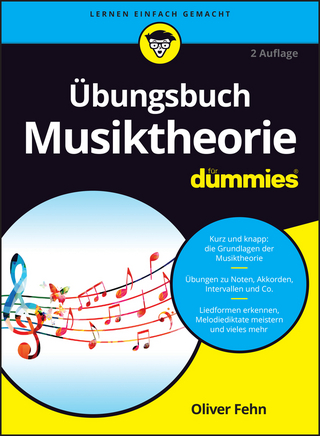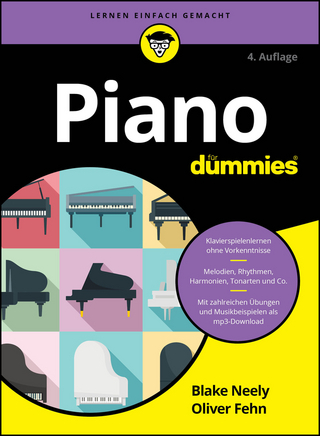
Between Air and Electricity
Bloomsbury Academic USA (Verlag)
978-1-5013-2760-5 (ISBN)
Composers and sound artists have explored for decades how to transform microphones and loudspeakers from “inaudible” technology into genuinely new musical instruments. While the sound reproduction industry had claimed perfect high fidelity already at the beginning of the twentieth century, these artists found surprising ways of use – for instance tweaking microphones, swinging loudspeakers furiously around, ditching microphones in all kinds of vessels, or strapping loudspeakers to body parts of the audience. Between air and electricity traces their quest and sets forward a new theoretical framework, providing historic background on technological and artistic development, and diagrams of concert and performance set-ups. From popular noise musician Merzbow to minimalist classic Alvin Lucier, cult instrument inventor Hugh Davies, or contemporary visual artist Lynn Pook – they all aimed to make audible what was supposed to remain silent.
www.microphonesandloudspeakers.com
Cathy van Eck is a composer, sound artist, and researcher in the arts with an interest in relationships between everyday objects, human performers, and electronic sound. She holds a Ph.D. of Leiden University and is lecturer at the University of the Arts in Bern.
Acknowledgements
Introduction
1 Beyond the curtain: the "true nature" of microphones and loudspeakers
An empty stage: listening according to the Konzertreform
A concert at home: the invention of sound reproduction technologies
Storage of air pressure waves
Transportation of air pressure waves
Amplification of air pressure waves
Between air and electricity
A standard, almost perfect amplifier and loudspeaker
Microphones and loudspeakers: the musical instruments of our age?
The "true nature" of microphones and loudspeakers
2 reproducing – supporting – generating – interacting: four approaches towards microphones and loudspeakers
Made for music: concepts on musical instruments
Violins, mixing desks and spoons
Piano lessons or a phonograph: how sound reproduction technologies entered the living room
The instrumental phonograph and the reproducing radio
Semantic acts of sound creation
Hearing voices through the noise: completely satisfactory recordings in 1902
Electricity, bodies and diaphragms
Reproducing: one sound system for all music
Supporting: the same sound but louder
Transparent technology
The record as a copy of the concert and the concert as a copy of the record
Generating: music without musical instruments
Interacting: resonance and resistance
3 The sound of microphones and loudspeakers
Acoustic feedback: an electro-mechanical oscillator
The tuning fork: an early sine wave generator
Transforming sound into a researchable object
Hermann von Helmholtz: tuning fork experiments
Hermann von Helmholtz: tuning forks reproduce human vowels
The tympanic principle and the tuning fork principle
Alexander Bell: metal rods reproduce sound
Alexander Bell: metal plates reproduce sound
Richard Eisenmann: an electric piano with tuning forks
George Dieckmann: a piano string oscillator
Bechstein-Siemens-Nernst-piano: piano, radio and gramophone through the same loudspeaker
4 movement, material and space: interacting with microphones and loudspeakers
Acoustic feedback: from mistake to music
MOVEMENT
Quintet by Hugh Davies: changing the distance between microphone and loudspeaker
Pendulum Music by Steve Reich: introducing silence
Bird and Person Dyning by Alvin Lucier: listening as a performative act
Green Piece by Anne Wellmer: interacting with another sound source
Mikrophonie I by Karlheinz Stockhausen: amplification only
Speaker Swinging by Gordon Monahan and Three Short Stories and an Apotheosis by Annea Lockwood: moving loudspeakers
MATERIAL
coffee making by Valerian Maly and 0'00'' by John Cage: everyday actions amplified
Inside Piano by Andrea Neumann: musical instruments and contact microphones
Apple Box Double by Pauline Oliveros and Shozyg by Hugh Davies: new instruments through amplification
Nodalings by Nicolas Collins: acoustic feedback through objects
Rainforest by David Tudor: every loudspeaker a different voice
Aptium by Lynn Pook, and Merzbow: the audible becomes feelable
SPACE
Music for piano with amplified sonorous vessels by Alvin Lucier: interaction between microphones and small spaces
Loudspeakers in brass instruments and focused loudspeakers: interaction between loudspeakers and small spaces
…..sofferte onde serene… and Guai ai gelidi mostri by Luigi Nono: interaction between loudspeakers and performance space
Acousmonium by François Bayle: loudspeaker orchestras
Performances by Eliane Radigue and Der tönende See by Kirsten Reese: sound unified in space and dispersed in space
Audible EcoSystemics by Agostino Di Scipio: closing the acoustic feedback loop again
5 Composing with microphones and loudspeakers
Beyond musical instruments: a hybrid of approaches
The Edison tone tests: no difference
Nothing Is Real (Strawberry Fields Forever) by Alvin Lucier: a piano in a teapot
Windy Gong by Ute Wassermann: singing through the gong
snare drum pieces by Wolfgang Heiniger: invisible beating
tubes by Paul Craenen: musicians, dancers and technicians
Open Air Bach by Lara Stanic: speeding up a sonata
Resistances and resonances of microphones and loudspeakers
The future of microphones and loudspeakers: between air and electricity
Appendix
Biographies
Bibliography
| Erscheinungsdatum | 15.02.2017 |
|---|---|
| Verlagsort | New York |
| Sprache | englisch |
| Maße | 152 x 229 mm |
| Gewicht | 463 g |
| Themenwelt | Kunst / Musik / Theater ► Musik |
| Technik | |
| ISBN-10 | 1-5013-2760-7 / 1501327607 |
| ISBN-13 | 978-1-5013-2760-5 / 9781501327605 |
| Zustand | Neuware |
| Haben Sie eine Frage zum Produkt? |
aus dem Bereich


